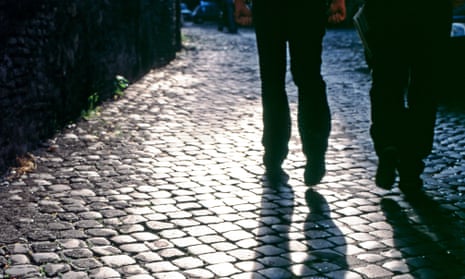Urban walking can be an act of exploration, exercise, political protest, practicality or discovery. There is no better way to get to know a city than to tread its streets, wander between the buildings and stroll aimlessly.
The Situationist International movement, founded in 1957 and spearheaded by French theorist Guy Debord, was based on the concept of “psychogeography” – the study of the emotional effects of physical environments. Their recommended psychogeographical walks, known as dérives (drifts), involved exploring the city by foot ruled only by your emotional mood and which direction it pulled you in. People have been going on, and writing about, psychogeographical walks ever since – from Will Self to Iain Sinclair.
But, as Lauren Elkin writes in her book Flâneuse: Women Walk the City, “the roots of what [psychogeographers] do lie in a 19th-century phenomenon – the flâneur, a figure of privilege and leisure, with the time and money to amble around the city at will. He is both stimulated and agitated by the buzz and hum of the city, the crowd; he is both part of and separate from the urban spectacle, both actor and observer.”
Urban walking isn’t always about pleasure, though. Charles Dickens explored the noctural experience of London on foot in his essay Night Walks. Suffering from insomnia, too distressed to sleep, he would wander the city streets at night, discovering some of the darker, bleaker sides of the city.
“Cities have always offered anonymity, variety, and conjunction, qualities best basked in by walking,” wrote Rebecca Solnit in her fantastic book about the act and art of walking, Wanderlust. “Walking the streets is what links up reading the map with living one’s life ... It makes sense of the maze all around.” Solnit also describes how walking leaves us free to think “without being wholly lost in our thoughts”.
In many parts of the world, the rise of the car and digital communications has rendered it less necessary to walk around cities. Some places, particularly in the US, are so car-dominated that people give you strange looks if you choose to walk. But by losing the appreciation of walking, are we letting go of an important experience?
Whether you stroll around your own city or explore others by foot, share your experiences of urban walking around the world. Does a wander through the streets soothe you – or induce stress? What have you unexpectedly discovered on city rambles? Have you used walking as an act of protest – or has a daydreaming stroll sparked creativity?
Share your experiences, stories and pictures of walking around cities below, and we’ll feature some of the contributions on Guardian Cities.
